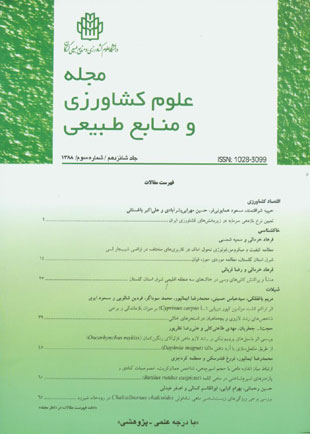Cluster analysis of morphological characters of Acer species in Iran
Acer L. or Maple belongs to Aceraceae or Sapindaceae. A. sacharum is potentially valuable as a source of sugar and the other species in this family are used in wood industrial products. Despite its economic importance, it constitutes species that raise many taxonomic and evolutionary questions. The systematic of this assemblage are further complicated by the fact that generic and specific circumscription within the family is considered to be highly artificial by many taxonomists with species delimitation primarily due to lack of enough morphological traits. Presence of unidentified and hybrid species, numerous synonymous and influences of environmental changes on morphological traits, as well as usage of different diagnostic characters for species identification, leaf polymorphism, have further complicated the confusion over species grouping in this genus. This work was initiated with the objective of morphology to: Identify taxa and establish their relationship and compare these results and data with other researches. Thus, we observed 63 morphological reproductive and vegetative characters from stem, leaf, flower and fruit and cluster analysis (Bray-curtis distance and single linkage) was done. Results showed that A. platinum and A.cappaducicum had the most similarities. Ordination analysis (Principle coordinate analysis) showed that Acer species distinct from other species (Koelreutaria paniculata Laxm, Dodonea viscosa (L) Jacq. based on first coordinate. These findings are consistent with earlier phyllogenetic and rRNA in several studies. Also A.negundo distinctness from other species at the first of cluster showed it is the basic species and this regard has opined by other phyllogenetic studies.


